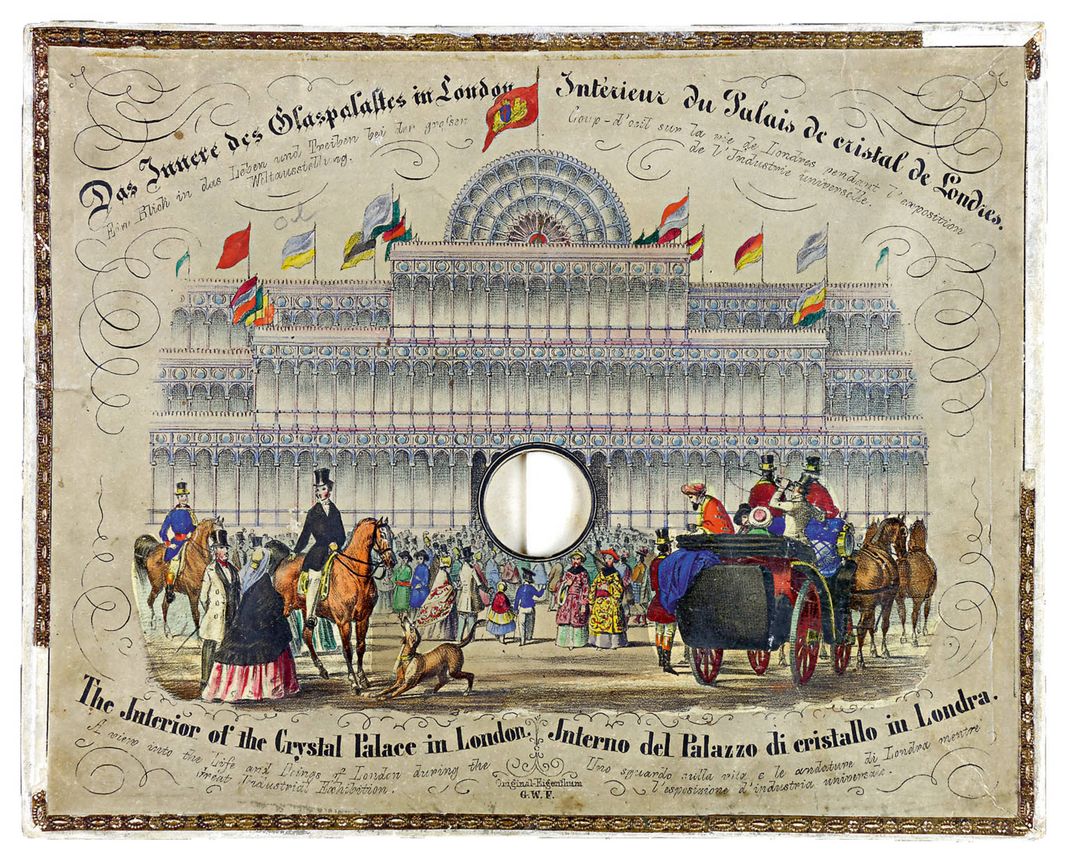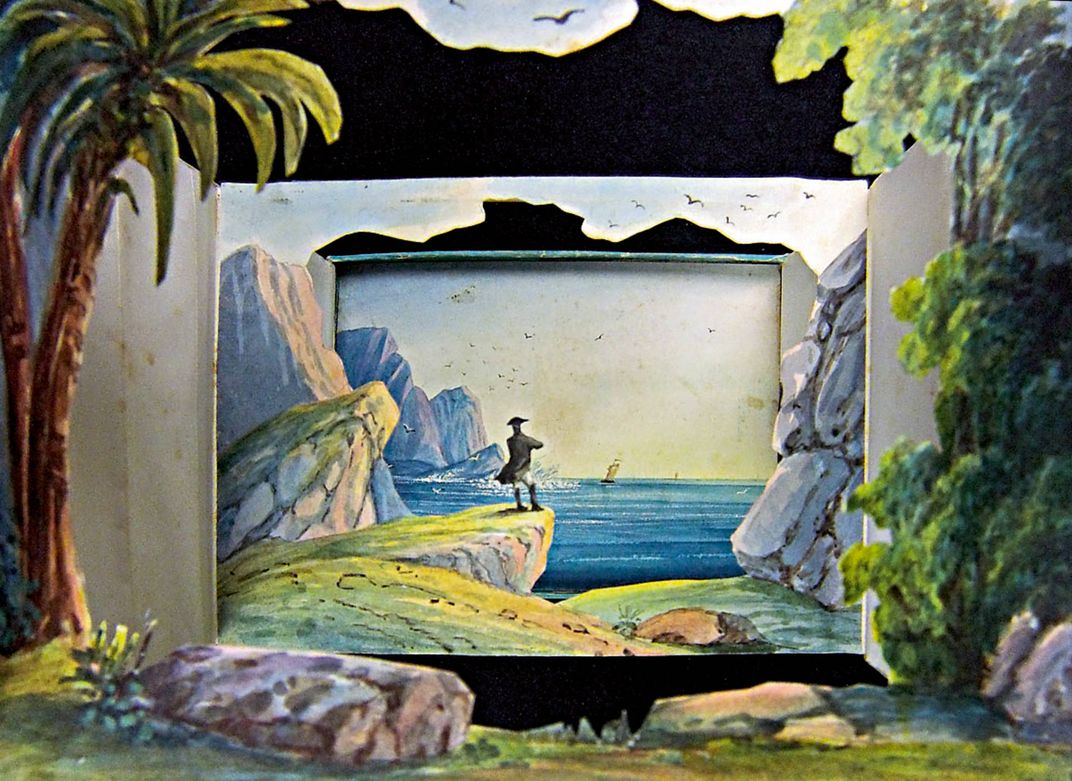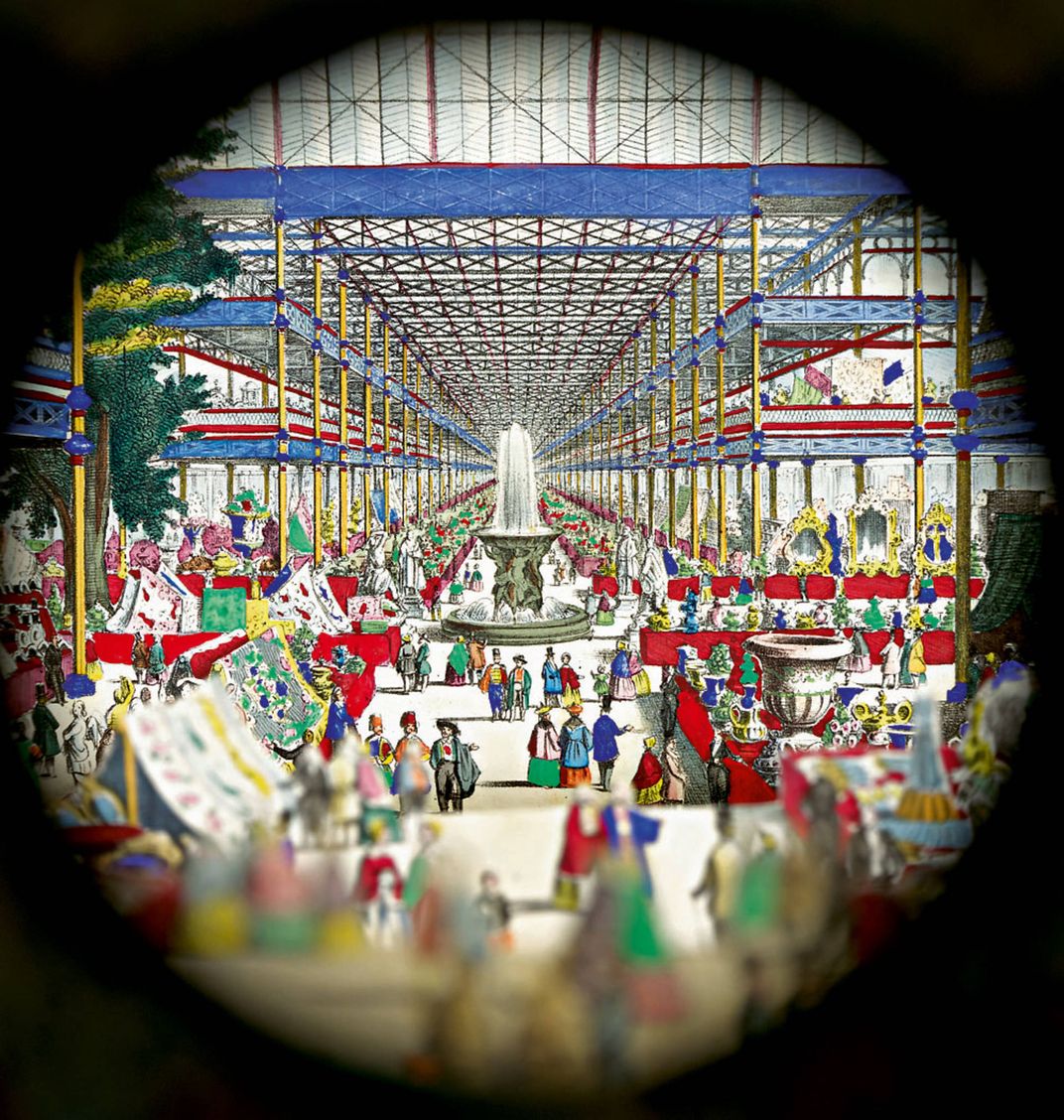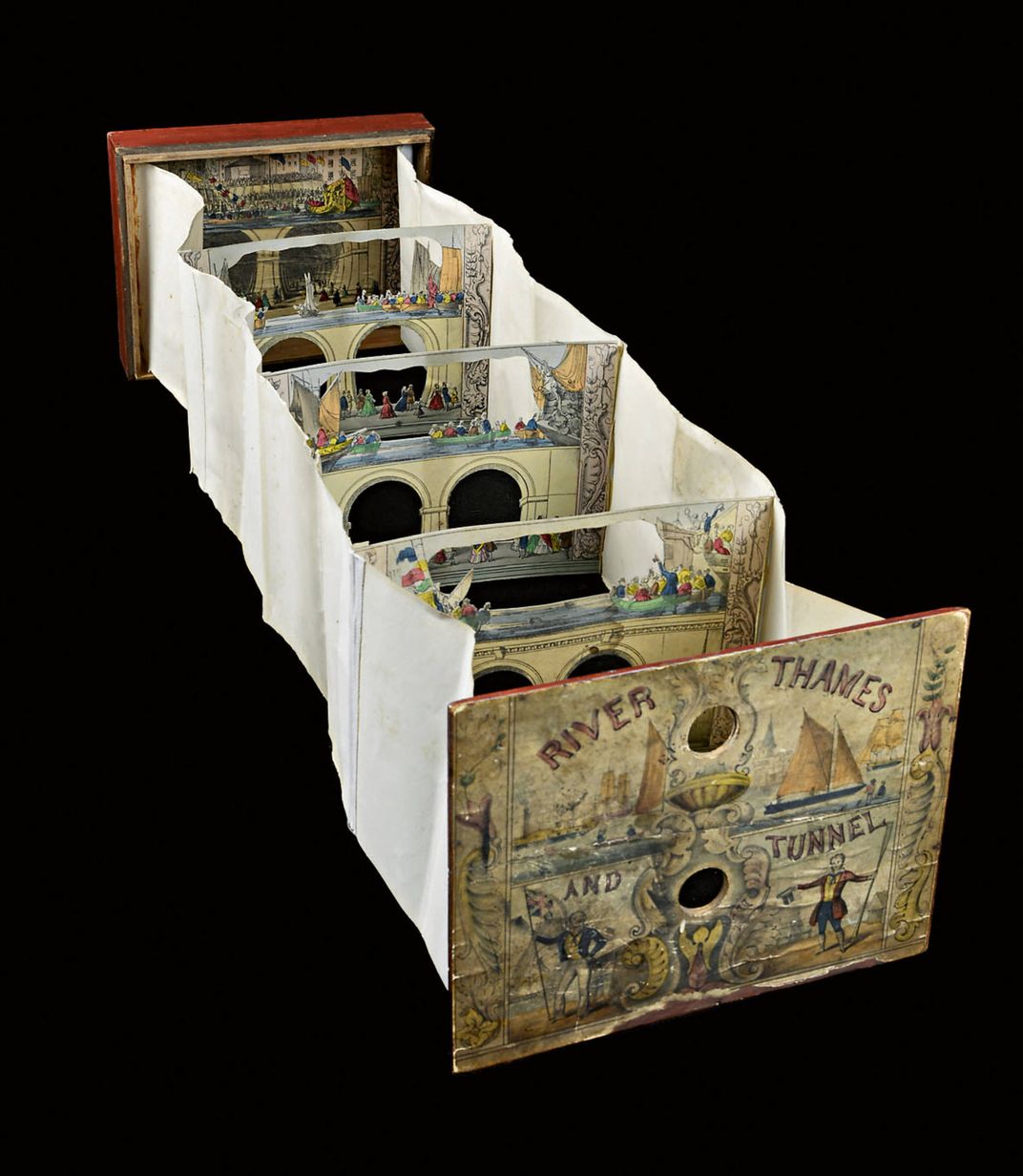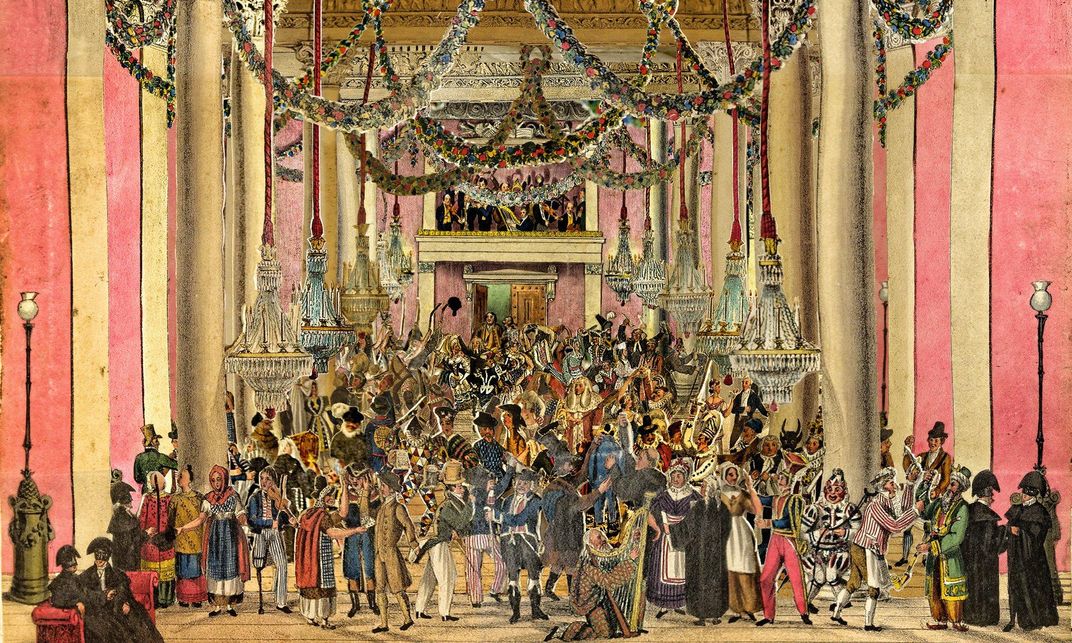This Museum’s Giant Collection of Paper Peepshows Offers a Pinhole into the Past
The art pieces were created during the 19th and earth 20th centuries to celebrate coronations, world events and illustrate children’s stories
Long before Pokémon Go, Oculus Rift or even television, artists in northern Europe came up with a unique way to let people “experience” important events or far away scenes. They made “peepshows,” also called tunnel books, that created a three-dimensional diorama viewed through a small opening at the front.
“The three-dimensionality allowed 19th-century children to imagine attending British coronation ceremonies, French steeplechase races, Chinese wedding processions, Turkish feasts at the end of Ramadan and Egyptian ceremonies for the opening of the Suez Canal,” writes Eva Kahn at The New York Times.
Recently, the largest collection of Victorian peepshows in the world was donated to the Victoria & Albert Museum in London. According to a press release, the 360-piece collection was put together by book collectors Jacqueline and Jonathan Gestetner over a span of 30 years. The museum plans to digitize the collection so the public can experience the peepshows without damaging the fragile art pieces.
“This collection is a real treasure trove,” Catherine Yvard, special collections curator at the museum’s National Art Library tells Mark Brown at The Guardian. “Peeping into one of these tunnel books is like stepping into another world, travelling through time and space. In an instant you can join Napoleon on the Island of St Helena or a rowdy masquerade on London’s Haymarket. Peepshows were 19th century virtual reality. They offer wonderful insights into social history. Considering that most of them would have been made quite cheaply, it is a miracle that so many have survived.”
The fragile nature of the objects have made the remaining pieces increasingly rare, Kahn reports, and the surviving ones have captured the attention of historians. The late historian Ralph Hyde, who wrote a book about the peepshows in the Gestetner collection told Kahn last year that sometimes the artists who made the peepshows included the wrong buildings in the backdrops and sometimes even placed events in the wrong cities. They even put in little Easter eggs. One memorable peepshow Kahn described depicts Napoleon’s forces at Waterloo. A careful observer can spot a tiny portrait of Jean Baptiste De Coster, a Flemish innkeeper who was forced into service by Napoleon as a guide depicted in the piece.
The Gestetner collection includes one of the oldest peepshows ever made, Teleorama No. 1 by H. F. Müller, an 1825 Austrian work that depicts a garden leading to a country house, reports Artdaily.org. But that's not even the oldest piece in the collection. There's also an 18th-century British boîte d'optique. A precursor to the peepshow, the mahogany box has a lens which allows viewers to observe the prints through.
